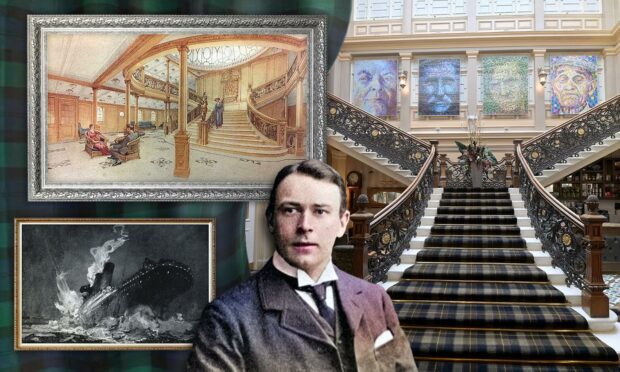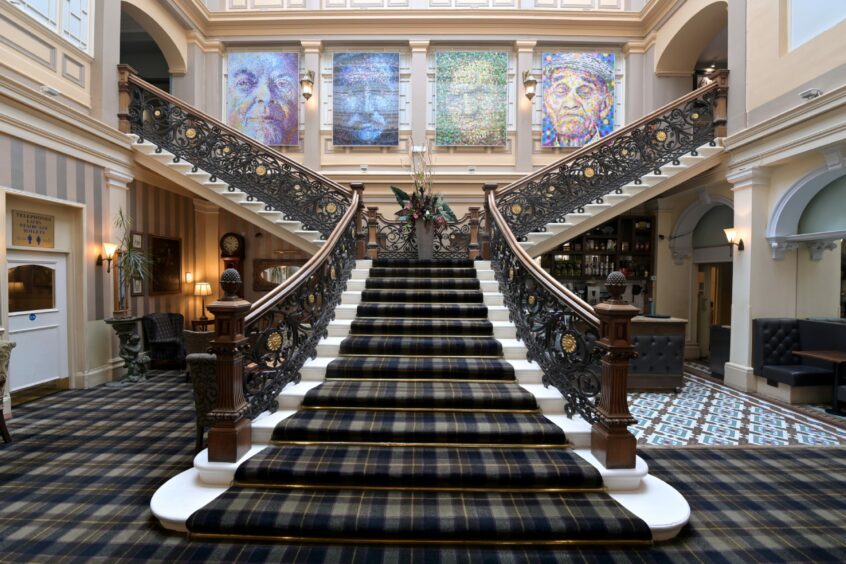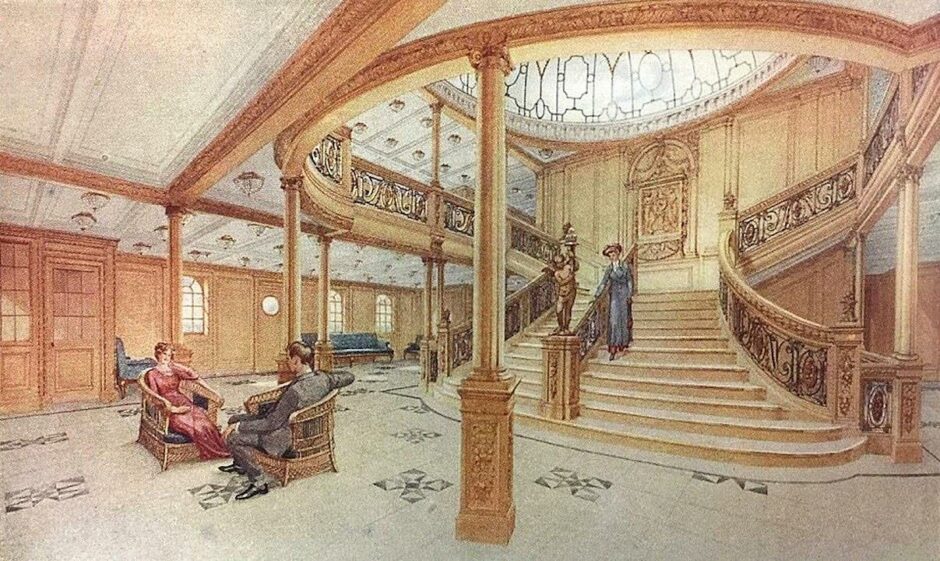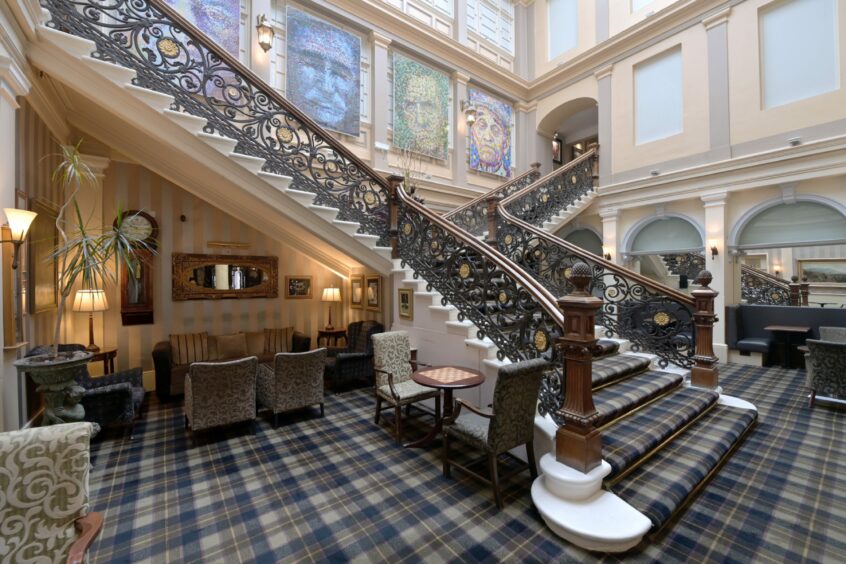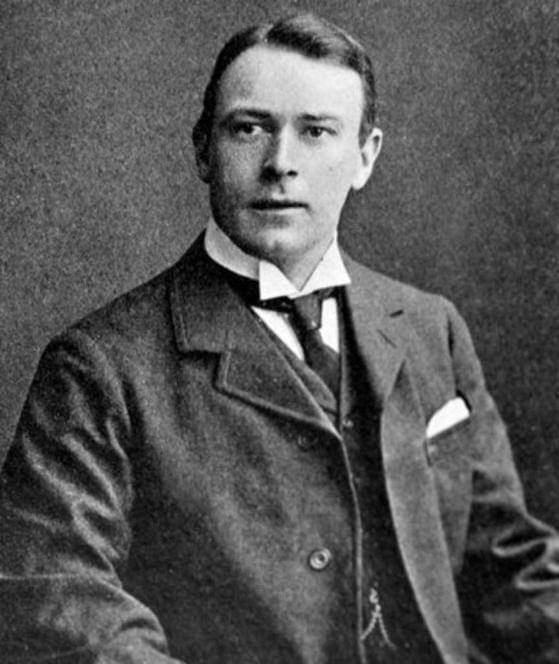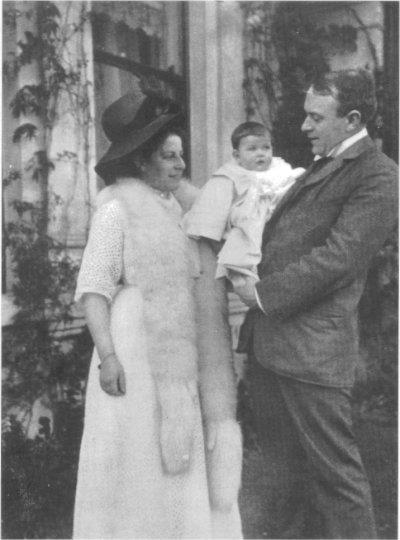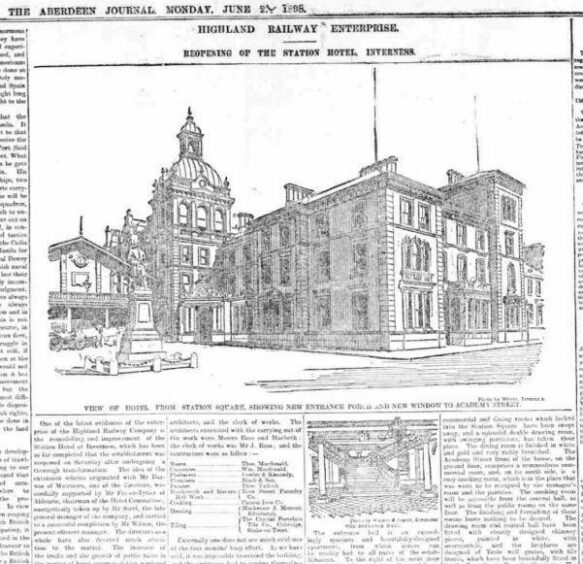The 110th anniversary of the sinking of the Titanic is up next week, on April 14/15, and sleuthing is underway to get to the bottom (gallows humour unintended) of a possible link between an Inverness hotel and the ill-fated liner.
The terrible tragedy never loses its fascination, part of this relating to the incredibly glamourous decor of the transatlantic liner, in an age where opulence and elegance in its wealthiest passenger class was de rigueur, no expense spared.
So could the ship’s stunning Grand Staircase, now ripped to shreds by the cruel North Atlantic ocean, have been inspired by the spectacular staircase still to be seen in the Royal Highland Hotel in Inverness?
Why do people think the stairs are the same?
The Titanic’s dramatic double-sided, sweeping, top-lit staircase bears an uncanny resemblance to that of the Station Hotel, as the Inverness hotel was known at the time.
On Titanic, and its sister ship Olympic, the Grand Staircase was in the forward part of the ship, and was the main connection between decks for first-class passengers, and the point of entry to numerous public rooms.
The White Star Line’s promotional brochure describes the Grand Staircase, as being “sixteen feet wide, extends over sixty feet and serves seven decks, five of which are also reached by the Three Electric Passenger Elevators.
“It is modeled closely after the style so prevalent during the reign of William and Mary, except that instead of the usual heavily-carved balustrade, a light wrought-iron grille has been employed, a fashion found in a few of the most exclusive great houses of that period.
“The Entrance Hall and Grand Staircase are surmounted by a glass dome of great splendor, a fitting crown as it were to these the largest and finest steamers in all the world.”
Station Hotel legend has it that the ship’s engineer was a guest at the hotel when he saw the staircase and decided the Titanic simply had to have one the same.
The tragedy of Thomas Andrews
This could have been Thomas Andrews, 39, the nephew of Lord Pirrie, the principal owner of Harland & Wolff in Belfast where the great liner was built.
Andrews went down with the ship.
Hard to imagine how he must have felt breaking the news to the captain that the ‘unsinkable’ ship would sink, and rapidly, after five of its compartments were holed.
After hurrying passengers to the few lifeboats available, he made no attempt to leave and at the end was observed by a steward sitting in the first-class smoking room, staring at a painting of Plymouth harbour.
Buildings archaeologist Susan Brook has been trying to verify the legend of the Station Hotel staircase.
She contacted Aidan McMichael, chairman of the Belfast Titanic Society, who agreed the similarity was quite remarkable.
A challenge to the theory
But he had a few drops of cold water to pour on the theory, Susan said.
“He said it was also rumoured that the designers of Titanic were inspired by the grand staircases of Belfast City Hall, opened just six years before Titanic’s launch.
“Also that one of the big department stores in central Belfast had a staircase which was also supposed to be an inspiration.
“But on the other hand, both of those staircases wouldn’t quite match that of the Station Hotel.”
The hotel often boasted at the time of its patronage by royalty and ‘most’ European nobility, and could have attracted White Star Line managers or someone connected to Harland & Wolff, Mr McMichael agreed.
“The ship designers would have wanted the ship to have been top of the list in terms of innovation and opulence and that means their selection of staircase design would have been key.”
The staircase dates to the extensive refurbishment, by famous Inverness architect Alexander Ross, in 1898.
The design of the Station Hotel
Susan said: “I know the staircase layout and design are fairly standard for the late Victorian era, and that closer to home would provide a more likely inspiration, but I am carrying on trying to pin down this amazing link with the Titanic story.”
The Station Hotel was designed in the Italianate style by civil engineer Joseph Mitchell in 1855, coinciding with the opening of the Inverness and Nairn Railway.
The enterprise was a roaring success and as the railways expanded, so did the hotel, in a redesign to accommodate more rooms only three years later.
The Alexander Ross update and extension in 1898 exuded Ross’s signature French style, with the addition of the ornate tower next to the new front entrance.
In another mystery, the fancy turret at the top of the tower, seen in the illustration above, is now missing, and Susan has tried in vain so far to find out when this occurred and why.
More like this:
The tragedy “forgotten by history” in which 635 people died when a ship sank near Rockall
‘To Quebec or the bottom!’: Fateful cry of captain of doomed emigrant ship wrecked off Barra
